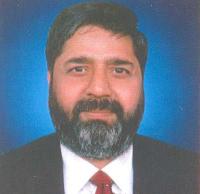

January 19 is not just a date on the calendar for Kashmiri Pandits, it denotes their forced separation from their homes in darkness in the biting cold of the severest wintry spell, known as “ Chillai Kalan,” and amid ever haunting fear of losing lives to militancy in the Valley. That was 32 years ago.
.That was a tragedy of momentous proportion, which unfolded in 1990. The greater tragedy, however, is that there is no road nor roadmap for their return to the Valley. This is despite huge promises, and the construction of the concrete structures by the government to house them as and when they decide to return. There is no date and year on the calendar to see this happening, today, tomorrow or years later.
Losing homes is a lifetime tragedy and when the prospects of the return to the same-old familiar houses are blanketed by fear, mutual distrust, and lurking sense of insecurity, it becomes a life-long nightmare.
The January 19 is more of symbolism than having any direct relation to their migration from the Valley . The community had started migrating months before January 1990 after a series of select killings of the community leaders, activists and professionals. Ironically, it was on this date, 32 years ago, when, the newly appointed, rather re-appointed Governor Jagmohan, had taken charge in Jammu, and announced Governor’s rule. He had accepted the resignation of the Farooq Abdullah government, accused by the community of being complicit in encouraging the Islamic militants -inspired crowds who forced their exodus. There are rival versions, and fiercely contested ones, as to what caused the migration. But the fact is that January 19 represents a lot of symbolism and an echo of calls by the militants-inspired crowds asking them to leave the Valley for safety.
The fact, as of today, is that the community is nowhere close to their homes in the Valley even after 32 years of wait. It is both physical and psychological distance that it has been unable to surmount. It is genuinely scared of the situation in Kashmir, where armed militancy has shown no signs of disappearing even as the security forces claim that they have done a near-perfect job in eliminating most of the terrorists. There is a big question that they have not been able to address if the militants have been fought and killed and their ecosystem brought under assault as never before, then where is the difficulty in declaring Kashmir safe for Kashmiri Pandits to return. The fact, which they cannot hide is that there is a growth in local militancy, the infiltration of armed terrorists from across the border is almost negligible, that is what the army keeps on claiming showing that how robust is its anti-infiltration grid.
Then there is a big gap of more than three decades to bridge. And time length has made it very, very, difficult, if not impossible for this unbridgeable gap to be bridged. It is a difficult proposition, and it needs to be understood that there cannot be a two-state solution in Kashmir on the basis of the communal distribution of the population. Any such endavour to force geographical division of the Valley on the basis of the religious affiliations of the communities is dangerous, and there should be no experiment with it. Kashmiri Pandits, their pain is immense. Losing home is the biggest tragedy, and when. That happens when the circumstances turn hostile for them where they used to live and claim not only the land but also the Muslim neighbhourhood as their own, is a life-long tragedy. The effort at reconciling the differences has never been made and there is a very little, rather remote possibility of the communities sitting across the table and working out an arrangement to restore the KPs to the land of their ancestors. The government can be a facilitator at best not an interventionist. The intervention, other than improving the security situation, would prove counterproductive.
What has caused the differences between the two communities is the mutual suspicion that has grown over the years since the migration of Kashmiri Pandits. The migrant community has been in an unforgiving mode for it has never tried to distinguish between the general Muslim population and the armed militants, the thesis being that they were in league with the armed militants in pushing them out of their homes, many of which have been burnt or got reduced to rubble over the time. In the process, those who became champions of the community, they started a narrative of demonization of militants and the community they belong to. That narrative was fetched too far, and the venom injected about Kashmir, is being considered as one of the major reasons that made the government to do away with the special status and privileges of the permanent residents of the erstwhile state of Jammu and Kashmir. This has furthered the differences and distances. The roadmaps have vanished in the widening crevices.
Arun Joshi is a Senior Journalist, Political Analyst based in Jammu and Kashmir. He has authored four books, including, “Eyewitness Kashmir: Teetering on Nuclear War”. He has worked with Hindustan Times, The Times of India, The Indian Express and The Tribune, and visited several countries to deliver lectures on Kashmir issue and international affairs.
Views expressed are personal



